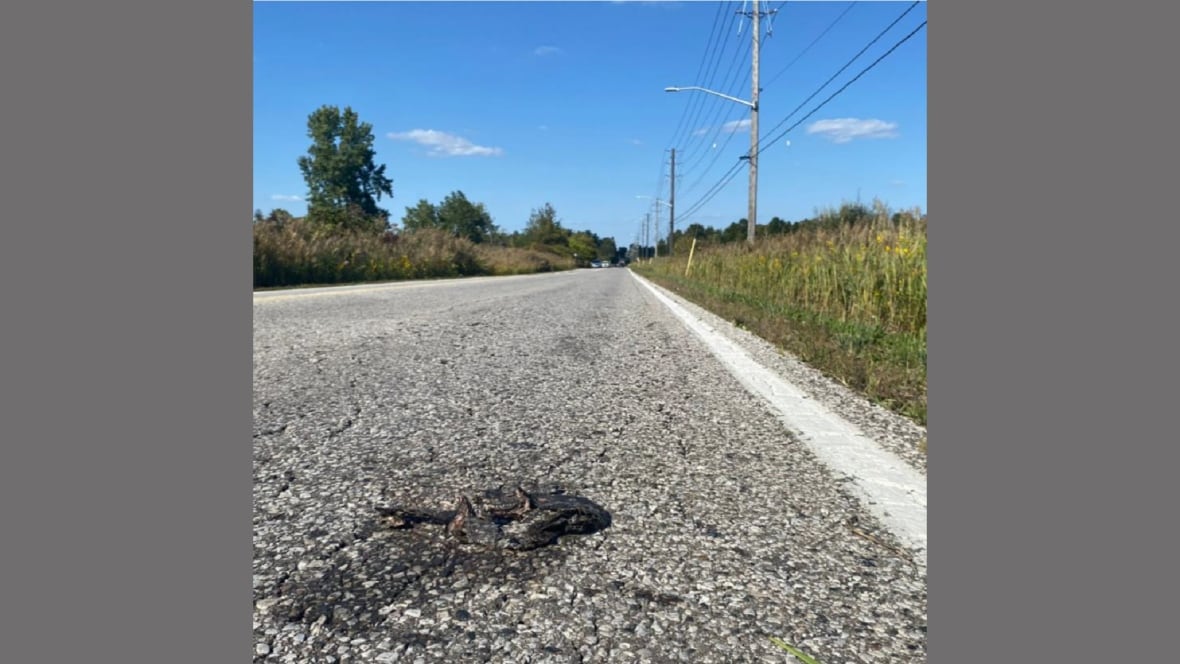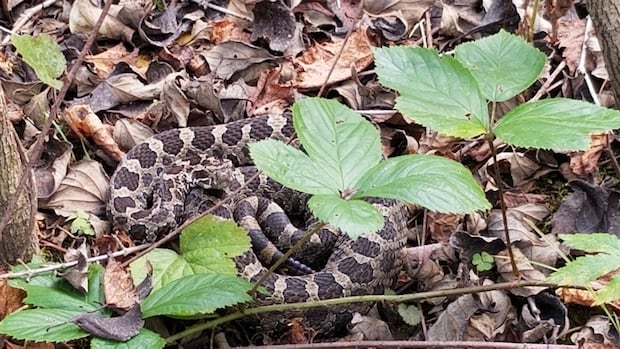The crushed corpse of a snake was found on a Windsor roadway last week — and a wildlife preservationist says it’s a terrible blow to the efforts to save the species in our region.
According to Jonathan Choquette, a biologist with Wildlife Preservation Canada, the dead snake was an Eastern Massasauga rattlesnake, which has been on the brink of disappearing completely from Windsor-Essex.
“It’s a huge hit to a very small population,” Choquette explained. “We’re talking about a handful of individuals… Extirpation means that a population of animals is extinct within a particular area.”
The snake’s body was found on Sept. 26 on Matchett Road, just north of Sprucewood Avenue — presumably after a fatal encounter with a vehicle.
The traffic victim wasn’t just any representative of a locally rare species: He had a name. “Gordo” was born in captivity, and cultivated to adulthood under human care.
In partnership with the Toronto Zoo, Gordo was brought to our region earlier this year and released to the wild — specifically to try to bolster the local presence of the species.

Choquette said an electronic transmitter was implanted in Gordo, and the Ojibway Prairie Reptile Recovery program had been tracking Gordo’s movements. The hope was that he would interact with female Massasauga rattlesnakes who are also being tracked.
“We’re at the point where we need to actually restock the population in order to bring it back to something sustainable,” Choquette said.
A team member discovered Gordo’s flattened body in person, recognizing the scale colour pattern of the species. Broken pieces of the transmitter were within the remains.
“We were doing a translocation study with Gordo,” Choquette said. “We saw him the day before and he was hiding in a shrub thicket. The next day, he made a long movement, ended up on the road — and that was unfortunately the end of his life.”
Massasauga rattlers are known to have habitats in three places in Ontario: the Georgian Bay area, the Niagara Peninsula and the Ojibway Prairie Complex in Windsor-Essex.
Relatively small pit vipers, they’re the only truly venomous snake in the province.
Eastern hog-nosed snakes also have venom, but their bites are adapted to amphibian prey. Massasauga rattlers have front fangs, and their venom is potentially deadly to humans.
However, there have been only two recorded deaths in Ontario due to Massasauga rattlesnake bites, and they both occurred more than 50 years ago.
Choquette pointed out that heart disease, cancer, automobile accidents, and even bee stings are more dangerous to Canadians than the possibility of a rattler bite.
Meanwhile, the danger to animals — particularly reptiles — on Matchett Road is known in the community. The City of Windsor has installed signs and traffic-slowing features.
But Choquette said reptile mortality on local roadways continues. His team members have counted more than 80 dead reptiles from six species so far this fall, and he expects this year’s total number of reptile road kills will reach 300 by the end of the month.
Choquette would like to see more protective fencing on Matchett Road. Not just chain-link fencing, but barriers to keep earthbound animals from crawling onto the roadway.
He knows that would take investment from the municipal, provincial, or even federal government. But he feels it’s worth it to protect an endangered species in what’s supposed to become a national urban park.
“We have a law in place where we have decided as a nation that we value wildlife, we value natural creatures,” Choquette said.
“Massasauga rattlers are the most endangered reptile in Essex County. It actually makes this a pretty special place.”








